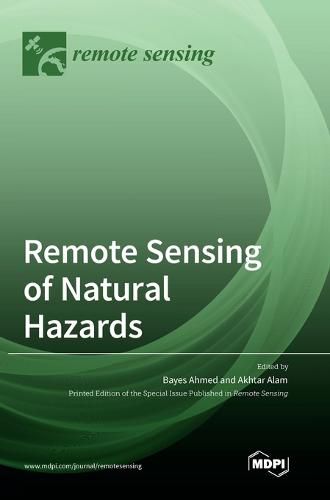Readings Newsletter
Become a Readings Member to make your shopping experience even easier.
Sign in or sign up for free!
You’re not far away from qualifying for FREE standard shipping within Australia
You’ve qualified for FREE standard shipping within Australia
The cart is loading…






This title is printed to order. This book may have been self-published. If so, we cannot guarantee the quality of the content. In the main most books will have gone through the editing process however some may not. We therefore suggest that you be aware of this before ordering this book. If in doubt check either the author or publisher’s details as we are unable to accept any returns unless they are faulty. Please contact us if you have any questions.
Each year, natural hazards such as earthquakes, cyclones, flooding, landslides, wildfires, avalanches, volcanic eruption, extreme temperatures, storm surges, drought, etc., result in widespread loss of life, livelihood, and critical infrastructure globally. With the unprecedented growth of the human population, largescale development activities, and changes to the natural environment, the frequency and intensity of extreme natural events and consequent impacts are expected to increase in the future.
Technological interventions provide essential provisions for the prevention and mitigation of natural hazards. The data obtained through remote sensing systems with varied spatial, spectral, and temporal resolutions particularly provide prospects for furthering knowledge on spatiotemporal patterns and forecasting of natural hazards. The collection of data using earth observation systems has been valuable for alleviating the adverse effects of natural hazards, especially with their near real-time capabilities for tracking extreme natural events. Remote sensing systems from different platforms also serve as an important decision-support tool for devising response strategies, coordinating rescue operations, and making damage and loss estimations.
With these in mind, this book seeks original contributions to the advanced applications of remote sensing and geographic information systems (GIS) techniques in understanding various dimensions of natural hazards through new theory, data products, and robust approaches.
$9.00 standard shipping within Australia
FREE standard shipping within Australia for orders over $100.00
Express & International shipping calculated at checkout
This title is printed to order. This book may have been self-published. If so, we cannot guarantee the quality of the content. In the main most books will have gone through the editing process however some may not. We therefore suggest that you be aware of this before ordering this book. If in doubt check either the author or publisher’s details as we are unable to accept any returns unless they are faulty. Please contact us if you have any questions.
Each year, natural hazards such as earthquakes, cyclones, flooding, landslides, wildfires, avalanches, volcanic eruption, extreme temperatures, storm surges, drought, etc., result in widespread loss of life, livelihood, and critical infrastructure globally. With the unprecedented growth of the human population, largescale development activities, and changes to the natural environment, the frequency and intensity of extreme natural events and consequent impacts are expected to increase in the future.
Technological interventions provide essential provisions for the prevention and mitigation of natural hazards. The data obtained through remote sensing systems with varied spatial, spectral, and temporal resolutions particularly provide prospects for furthering knowledge on spatiotemporal patterns and forecasting of natural hazards. The collection of data using earth observation systems has been valuable for alleviating the adverse effects of natural hazards, especially with their near real-time capabilities for tracking extreme natural events. Remote sensing systems from different platforms also serve as an important decision-support tool for devising response strategies, coordinating rescue operations, and making damage and loss estimations.
With these in mind, this book seeks original contributions to the advanced applications of remote sensing and geographic information systems (GIS) techniques in understanding various dimensions of natural hazards through new theory, data products, and robust approaches.